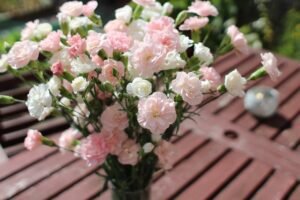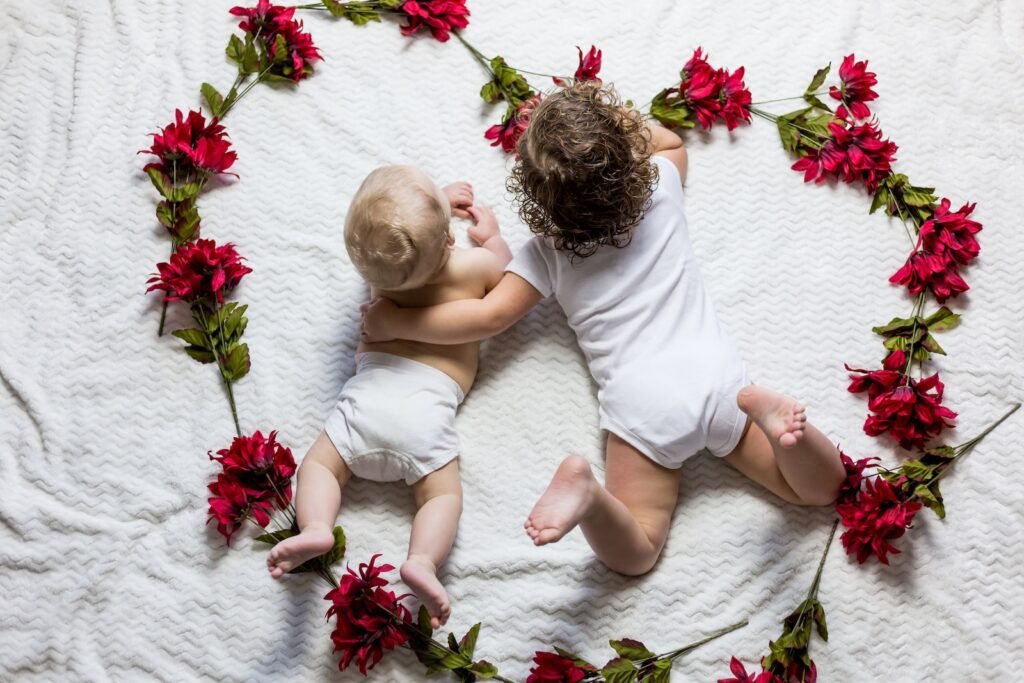January Birth Flower is the Carnation, a beautiful and fragrant flower that symbolizes love, affection, and fascination. The Carnation is a popular choice for birthdays and other special occasions, and it has been celebrated in many cultures throughout history. In this article, we will explore the history and symbolism of the January Birth Flower, as well as its different varieties and care tips. Whether you’re a January baby yourself or simply interested in flowers, read on to discover more about this fascinating bloom.
What is my birth flower?
| Month | Birth Flower Chart | Meaning & Symbolic |
|---|---|---|
| Jan Birth Flower | Carnation | Love, fascination, and distinction |
| February Birth Flower | Violet | Loyalty, humility, and devotion |
| March Birth Flower | Daffodil | Rebirth, new beginnings, and happiness |
| April Birth Flower | Daisy | Innocence, purity, and new beginnings |
| May Birth Flower | Lily of the Vally | Happiness, humility, and sweetness |
| June Birth Flower | Rose | Love, passion, and beauty |
| July Birth Flower | Larkspur | Openness, positivity, and celebrating success |
| July Birth Flower | Water Lily | Purity, enlightenment, and rebirth |
| August Birth Flower | Gladiolus | Strength, integrity, and infatuation |
| September Birth Flower | Aster | Love, wisdom, and faith |
| October Birth Flower | Marigold | Passion, creativity, and grace |
| November Birth Flower | Chrysanthemum | Loyalty, love, and friendship |
| December Birth Flower | Poinsettia | Joy, purity, and rebirth |
Historical Significance of January Birth Flower
Carnation – January Birth Flower

The Carnation, also known as Dianthus caryophyllus, is a popular flower that is recognized as the birth flower for the month of January. The Carnation is native to the Mediterranean region and is believed to have been first cultivated by the Greeks and Romans.
There are many different varieties of Carnations available today, ranging in color from white to pink to red. Some varieties even have striped or variegated petals. The flowers are usually single, with five petals that are fringed or toothed.
Carnations are relatively easy to care for and can be grown both indoors and outdoors. They prefer well-drained soil and plenty of sunlight and should be watered regularly. Deadheading the flowers as they fade will encourage more blooms to appear.
Snowdrop – January Birth Flower

The Snowdrop, also known as Galanthus, is a delicate flower that is recognized as the second birth flower for the month of January. Snowdrops are native to Europe and Asia and are often one of the first flowers to bloom in the winter months.
Snowdrops are small, white flowers with bell-shaped petals that hang from a thin stem. They are usually planted in groups and can form a beautiful carpet of white when in bloom. Snowdrops prefer moist, well-drained soil and should be planted in a location that receives partial shade.
Snowdrops can be propagated by dividing the bulbs in the fall, and they can also be grown from seeds. They are a popular choice for winter weddings and other special occasions and are often used in floral arrangements and table centerpieces.
The Meaning and Symbolism of January birth month flower
Carnation – January Birth Flower
The Carnation is a flower that has been associated with a variety of meanings and symbolisms throughout history. As the birth flower for the month of January, it is commonly associated with love, affection, and admiration. However, the color of the Carnation can also convey different meanings, with white Carnations representing pure love, pink Carnations representing maternal love, and red Carnations representing romantic love.
In addition to its symbolic meaning, the Carnation has also been valued for its medicinal properties and is believed to have been used to treat a variety of ailments in ancient times. The Carnation has also been used in religious ceremonies and as a symbol of love and devotion.
Snowdrop – January Birth Flower
The Snowdrop is a delicate flower that is highly regarded for its symbolic meaning of purity, hope, and new beginnings. It is often one of the first flowers to bloom in the winter months, signaling the coming of spring and the end of the cold, dark winter.
The Snowdrop has a rich history and has been associated with various legends and folklore. According to one legend, the Snowdrop was created when Eve was banished from the Garden of Eden and a cold, bleak winter descended upon the earth. An angel took pity on her and caught some of the snowflakes falling from the sky, transforming them into the Snowdrop to bring a sign of hope to Eve.
| May Birth Flower: A Look at the Role of Lily of the Valley and Hawthorn
Interesting Facts about Birth Flower for January
Carnation – January Birth Flower
- The Carnation is one of the oldest cultivated flowers in the world, with evidence of its cultivation dating back more than 2,000 years.
- In many cultures, the Carnation is associated with good luck and is often given as a gift for special occasions such as weddings, birthdays, and graduations.
- The Carnation is the national flower of Spain and is often used in traditional Spanish celebrations such as the Feria de Abril.
- Carnations come in a variety of colors, with red being the most popular choice for Valentine’s Day and white being a common choice for weddings.
- In ancient times, the oil extracted from Carnation petals was used to treat a variety of ailments, including skin irritations, headaches, and digestive problems.
Snowdrop – January Birth Flower
- Snowdrops are among the earliest flowering bulbs to bloom in the year, often appearing in late January or early February.
- In the language of flowers, Snowdrops symbolize purity, hope, and consolation.
- Snowdrops were first introduced to the UK in the 16th century from the eastern Mediterranean, and have since become a popular garden plant in many parts of the world.
- The Snowdrop has been featured in many works of literature, including Shakespeare’s play “Cymbeline” and Robert Frost’s poem “A Prayer in Spring.”
- The Snowdrop has also been used in traditional medicine to treat a variety of ailments, including respiratory problems, fever, and skin conditions.
| August Birth Flower: Unveiling the Meaning and Significance of Gladiolus
The use of Carnations and Snowdrops in floral arrangements and bouquets
Conclusion:
If you are interested in learning more about birth flowers, be sure to check out a birth flower chart, which lists the flower associated with each month. It’s a great way to discover the unique meanings and symbolism behind each flower’s name. Whether you’re a fan of Carnations, Snowdrops, or any other flower, there’s always something new to discover and appreciate in the world of floral design.

